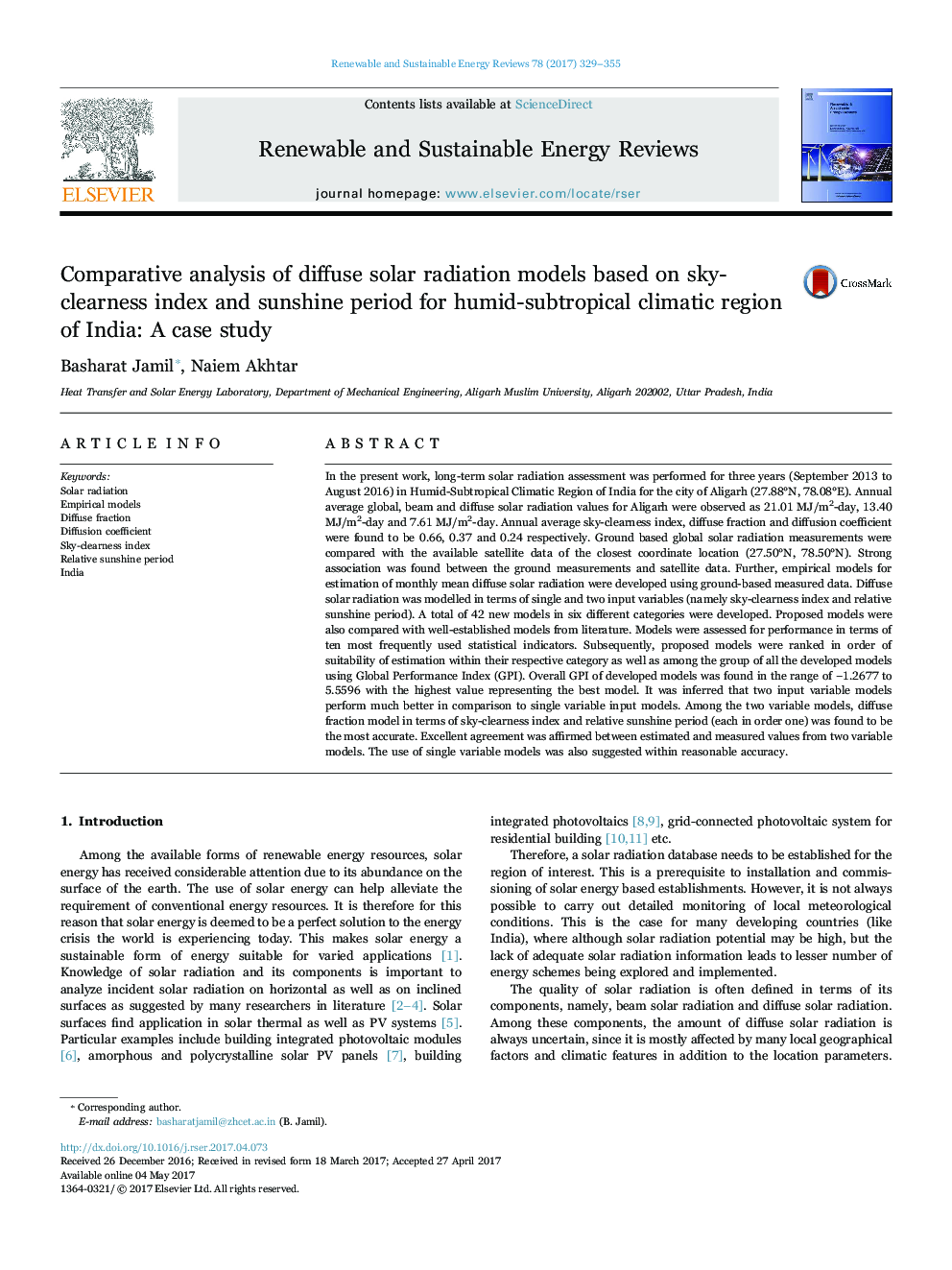| Article ID | Journal | Published Year | Pages | File Type |
|---|---|---|---|---|
| 5482471 | Renewable and Sustainable Energy Reviews | 2017 | 27 Pages |
Abstract
In the present work, long-term solar radiation assessment was performed for three years (September 2013 to August 2016) in Humid-Subtropical Climatic Region of India for the city of Aligarh (27.88°N, 78.08°E). Annual average global, beam and diffuse solar radiation values for Aligarh were observed as 21.01 MJ/m2-day, 13.40 MJ/m2-day and 7.61 MJ/m2-day. Annual average sky-clearness index, diffuse fraction and diffusion coefficient were found to be 0.66, 0.37 and 0.24 respectively. Ground based global solar radiation measurements were compared with the available satellite data of the closest coordinate location (27.50°N, 78.50°N). Strong association was found between the ground measurements and satellite data. Further, empirical models for estimation of monthly mean diffuse solar radiation were developed using ground-based measured data. Diffuse solar radiation was modelled in terms of single and two input variables (namely sky-clearness index and relative sunshine period). A total of 42 new models in six different categories were developed. Proposed models were also compared with well-established models from literature. Models were assessed for performance in terms of ten most frequently used statistical indicators. Subsequently, proposed models were ranked in order of suitability of estimation within their respective category as well as among the group of all the developed models using Global Performance Index (GPI). Overall GPI of developed models was found in the range of â1.2677 to 5.5596 with the highest value representing the best model. It was inferred that two input variable models perform much better in comparison to single variable input models. Among the two variable models, diffuse fraction model in terms of sky-clearness index and relative sunshine period (each in order one) was found to be the most accurate. Excellent agreement was affirmed between estimated and measured values from two variable models. The use of single variable models was also suggested within reasonable accuracy.
Related Topics
Physical Sciences and Engineering
Energy
Renewable Energy, Sustainability and the Environment
Authors
Basharat Jamil, Naiem Akhtar,
